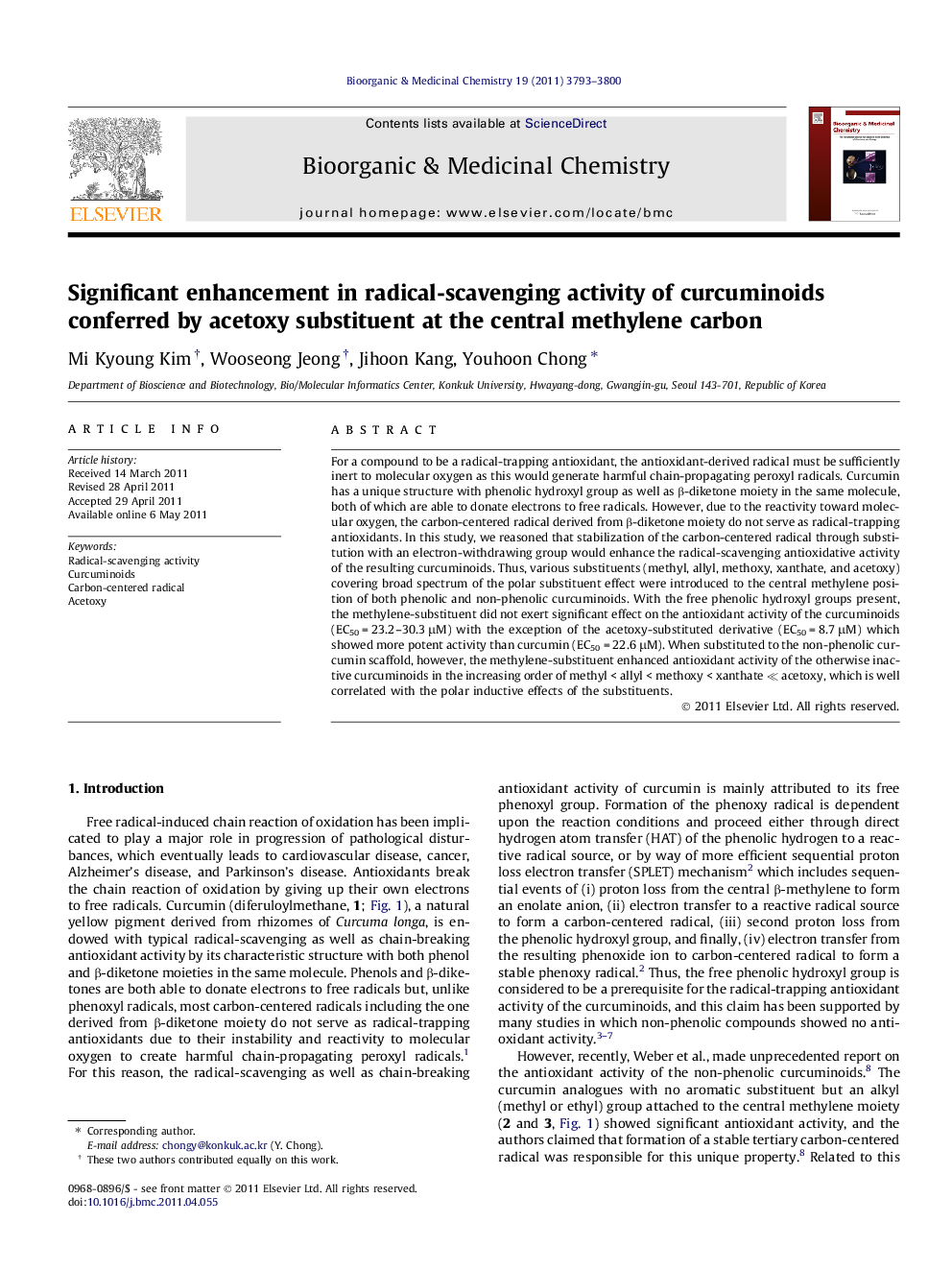| کد مقاله | کد نشریه | سال انتشار | مقاله انگلیسی | نسخه تمام متن |
|---|---|---|---|---|
| 1361234 | 981459 | 2011 | 8 صفحه PDF | دانلود رایگان |

For a compound to be a radical-trapping antioxidant, the antioxidant-derived radical must be sufficiently inert to molecular oxygen as this would generate harmful chain-propagating peroxyl radicals. Curcumin has a unique structure with phenolic hydroxyl group as well as β-diketone moiety in the same molecule, both of which are able to donate electrons to free radicals. However, due to the reactivity toward molecular oxygen, the carbon-centered radical derived from β-diketone moiety do not serve as radical-trapping antioxidants. In this study, we reasoned that stabilization of the carbon-centered radical through substitution with an electron-withdrawing group would enhance the radical-scavenging antioxidative activity of the resulting curcuminoids. Thus, various substituents (methyl, allyl, methoxy, xanthate, and acetoxy) covering broad spectrum of the polar substituent effect were introduced to the central methylene position of both phenolic and non-phenolic curcuminoids. With the free phenolic hydroxyl groups present, the methylene-substituent did not exert significant effect on the antioxidant activity of the curcuminoids (EC50 = 23.2–30.3 μM) with the exception of the acetoxy-substituted derivative (EC50 = 8.7 μM) which showed more potent activity than curcumin (EC50 = 22.6 μM). When substituted to the non-phenolic curcumin scaffold, however, the methylene-substituent enhanced antioxidant activity of the otherwise inactive curcuminoids in the increasing order of methyl < allyl < methoxy < xanthate ≪ acetoxy, which is well correlated with the polar inductive effects of the substituents.
Figure optionsDownload as PowerPoint slide
Journal: Bioorganic & Medicinal Chemistry - Volume 19, Issue 12, 15 June 2011, Pages 3793–3800